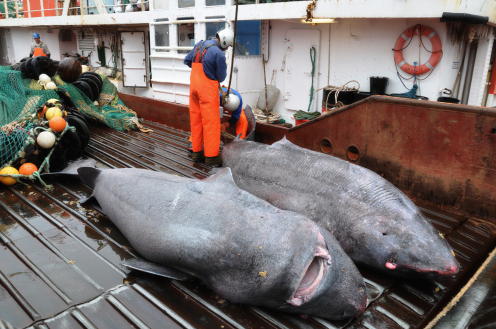
Photo: Julius Nielsen, University of Copenhagen. Click to download large version
More than 50 years ago, Danish fishery biologist Paul Marinus Hansen reported that Greenland sharks only grow a few centimeters over several years. Since then, researchers around the world could only speculate upon the lifespan of Greenland sharks. The question remained unanswered because the age of Greenland sharks cannot be determined using the traditional methods to determine the age of fish.
Carbon-14 dating of shark eye lenses
An international team of researchers, led by marine biologists at the University of Copenhagen’s Department of Biology, has revealed one of the enigmatic shark’s many secrets. Through
The article’s main author is PhD student Julius Nielsen of the University of Copenhagen’s Department of Biology. He performed the study in close cooperation with the Greenland Institute of Natural Resources, Arctic University of Norway and Aarhus University.
«Our lifespan study is based on the
Archaeological methods used to produce revolutionary results
The unique aspect of eye lenses has previously been used to discover the age of whales, but it is the first time that the
The study also marks an important milestone for the establishment of sustainable management plans for Greenland sharks. Julius Nielsen continues:
«Greenland sharks are among the largest carnivorous sharks on the planet, and their role as an apex predator in the Arctic ecosystem is totally overlooked. By the thousands, they accidentally end up as

Photo: Julius Nielsen, University of Copenhagen. Click to download large version
Interdisciplinary collaboration Aarhus University researchers were responsible for the
«This study of the Greenland shark’s lifespan has been made possible due to the close cooperation between University of Copenhagen and Greenland Institute of Natural Resources biologists, with their knowledge of sharks, and Aarhus University researchers, with their
The Greenland shark lifespan study is part of a PhD project addressing the Greenland shark’s general biology and runs for a period of 3 years. As such, the project also examined other aspects of Greenland shark’s biology. The collection of Greenland shark specimens used in the study has been conducted over a number of years mainly from accidental
Source: http://news.ku.dk/all_news/2016/08/greenland-sharks-live-for-hundreds-of-years/


